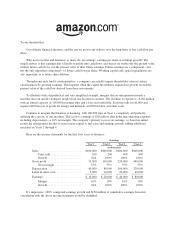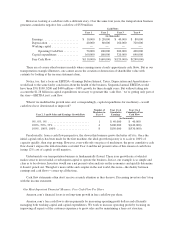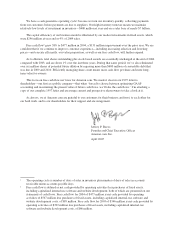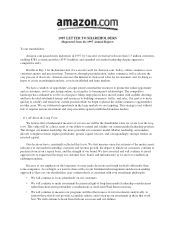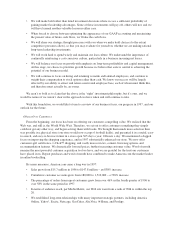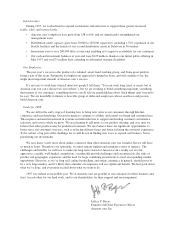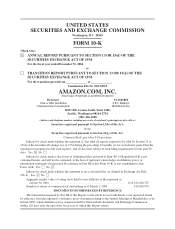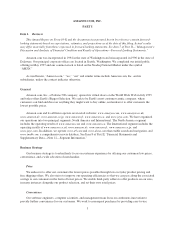Amazon.com 2004 Annual Report Download - page 6
Download and view the complete annual report
Please find page 6 of the 2004 Amazon.com annual report below. You can navigate through the pages in the report by either clicking on the pages listed below, or by using the keyword search tool below to find specific information within the annual report.
1997 LETTER TO SHAREHOLDERS
(Reprinted from the 1997 Annual Report)
To our shareholders:
Amazon.com passed many milestones in 1997: by year-end, we had served more than 1.5 million customers,
yielding 838% revenue growth to $147.8 million, and extended our market leadership despite aggressive
competitive entry.
But this is Day 1 for the Internet and, if we execute well, for Amazon.com. Today, online commerce saves
customers money and precious time. Tomorrow, through personalization, online commerce will accelerate the
very process of discovery. Amazon.com uses the Internet to create real value for its customers and, by doing so,
hopes to create an enduring franchise, even in established and large markets.
We have a window of opportunity as larger players marshal the resources to pursue the online opportunity
and as customers, new to purchasing online, are receptive to forming new relationships. The competitive
landscape has continued to evolve at a fast pace. Many large players have moved online with credible offerings
and have devoted substantial energy and resources to building awareness, traffic, and sales. Our goal is to move
quickly to solidify and extend our current position while we begin to pursue the online commerce opportunities
in other areas. We see substantial opportunity in the large markets we are targeting. This strategy is not without
risk: it requires serious investment and crisp execution against established franchise leaders.
It’s All About the Long Term
We believe that a fundamental measure of our success will be the shareholder value we create over the long
term.This value will be a direct result of our ability to extend and solidify our current market leadership position.
The stronger our market leadership, the more powerful our economic model. Market leadership can translate
directly to higher revenue, higher profitability, greater capital velocity, and correspondingly stronger returns on
invested capital.
Our decisions have consistently reflected this focus. We first measure ourselves in terms of the metrics most
indicative of our market leadership: customer and revenue growth, the degree to which our customers continue to
purchase from us on a repeat basis, and the strength of our brand. We have invested and will continue to invest
aggressively to expand and leverage our customer base, brand, and infrastructure as we move to establish an
enduring franchise.
Because of our emphasis on the long term, we may make decisions and weigh tradeoffs differently than
some companies. Accordingly, we want to share with you our fundamental management and decision-making
approach so that you, our shareholders, may confirm that it is consistent with your investment philosophy:
•Wewill continue to focus relentlessly on our customers.
•Wewill continue to make investment decisions in light of long-term market leadership considerations
rather than short-term profitability considerations or short-term Wall Street reactions.
•Wewill continue to measure our programs and the effectiveness of our investments analytically, to
jettison those that do not provide acceptable returns, and to step up our investment in those that work
best. We will continue to learn from both our successes and our failures.



